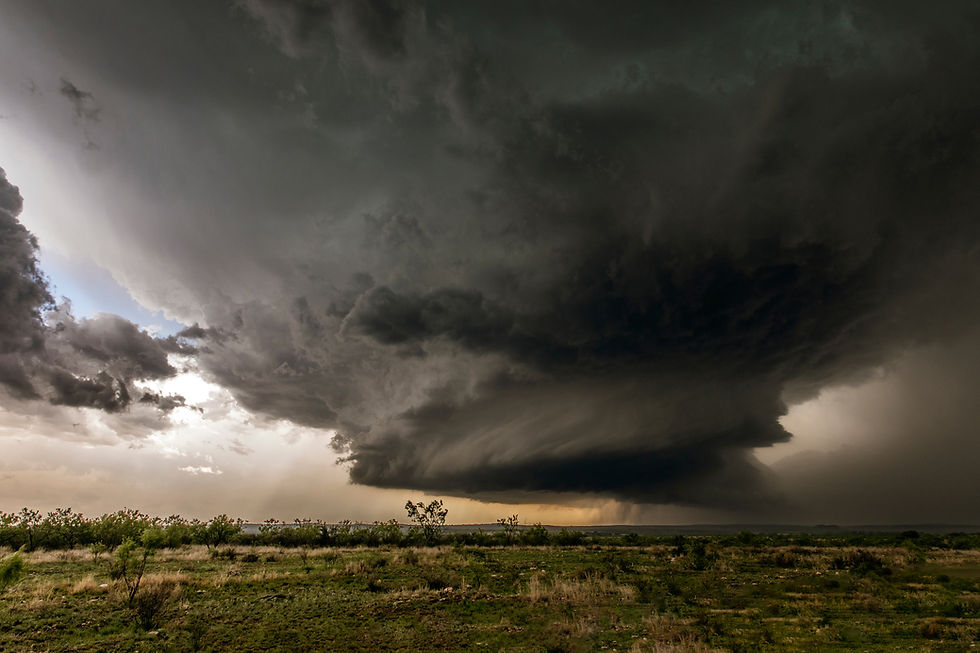How Natural Disasters Affect Electricity Grids
- Enercon

- Nov 2, 2022
- 4 min read
Updated: Nov 28, 2022
Natural disasters show us the devastating potential of our environment and can cause widespread death and destruction. Due to their interconnected nature and relatively fragile makeup, electricity grids are particularly vulnerable to the ravages of all types of natural disasters.
The multiple vulnerable points in the power production and distribution systems can lead to overloaded and destroyed components in localized settings. This creates cascading failures affecting more and more areas of the electricity grid, causing power outages for customers, which can exacerbate the negative impacts on people in affected areas, such as through suspending health service delivery or the inability to heat or cool the home.
There has been a 67% increase in major electricity grid outages since 2000, emphasizing the need for private and public organizations to do more to protect and help restore grids affected by these disasters.
Recent impacts of natural disasters on electricity grids include:
Hurricane: In Florida alone, hurricanes caused 2.1 million people to lose power during Hurricane Ian in 2022 and 4.5 million for Hurricane Irma in 2017. The effects of disrupted electricity grids were tragically demonstrated in Puerto Rico in 2017 when Hurricane Maria caused up to 8,500 deaths due to lost power alone.
Winter Storms: In 2021, Texas's extreme cold and winter storm conditions caused huge disruption to an unprepared electricity grid, leaving 10 million people without power and causing $130 billion in damage and lost output.
Flooding: Torrential rainfall of up to 500% over normal ranges caused massive flooding in Pakistan in September 2022, killing over 1,700 people and leaving millions without electricity, causing multiple knock-on effects for the region.
Wildfires: Power generation and transmission both contribute to and are affected by wildfires. Most notably in California, electricity grids have caused 6 of the largest 20 wildfires since 2015, leaving millions without power.
Earthquakes: Earthquakes can topple electricity grid infrastructure and severely disrupt service. A federal projection of earthquake damage in Southern California found that 25,000 elevators lacked emergency power sources which is just one example of the potential risks caused by earthquake disruption.

Maintaining Power Through Natural Disasters
Electrical power is essential for our way of life, and the impact of natural disasters is amplified by damage to electricity grids. To minimize these harmful effects, the Department of Energy (DOE) has identified the nation's electricity grid's reliability and resilience as "a strong and resilient power grid is vital to America's security, economy, and modern way of life." Let's take a look at some of the ways this can be achieved.
Reliability: Reliability, at least in terms of electricity grids, is about ensuring the durability of the grid and its ability to provide power, even in the face of natural disasters. This requires significant hardening of the electricity grid through upgrades to energy infrastructure. These include undergrounding electrical equipment and power lines, raising transformers above potential flood levels, deploying modern switchgears to minimize overloads, or water-insulating electrical control panels.
These upgrades often require significant expense when working on a national or even state level, with electricity grid infrastructure being expensive to ‘disaster-proof’ on such a scale. For example, the undergrounding of electrical cables could cost between $1 million and $10 million per mile.
Resilience: Resilience is about minimizing the consequences of natural disasters on the electricity grid. One simple way of looking at it would be reducing the time a typical customer’s lights stay off during a blackout. Responsible bodies can invest in solutions such as temporary emergency power generators to achieve resiliency goals. These are often carbon-based but can also be run from solar or wind resources.
Microgrids: Microgrids are a part of an electricity grid’s resilience in that they allow localized areas to provide and distribute their own energy through distributed energy resources. These energy resources may include solar generators, wind turbines, or carbon-fuel generators. It is also possible for small areas, even individual buildings, to use inverters connected to an energy storage system (e.g., a battery or powerwall) and completely island themselves in the event of losing electricity during a natural disaster.
Recovery: Restoring power after natural disasters is affected by the amount of work and how difficult it is for teams to get to the affected areas or infrastructure. In these situations, recovering power to critical loads like hospitals and care homes, as well as individual homes, can be achieved through mobile power units. These can be rapidly delivered to disaster situations and enable the function of vital infrastructure.

Invest and Upgrade Now
Natural disasters are happening with greater frequency, and in 2021 alone, the U.S. experienced 20 billion-dollar weather events. Electricity grids are among the most vulnerable infrastructure affected, amplifying the disaster's effects. To minimize these effects, responsible organizations need to invest in the reliability and resilience of power grids. The difference this investment makes can be huge; for example, Florida reported 695 deaths in nursing homes due to lost power after Hurricane Irma, but significant resiliency investment meant that no nursing homes reported deaths during Hurricane Ian.
At Enercon, we have been at the heart of disaster response in critical situations across the U.S. and the world, including 9/11, Hurricane Katrina, and Fukushima, Japan. As a result, the need for reliability through custom control panels and switchgears, as well as resiliency through microgrids, standby power gensets, and mobile power modules, has been steadily increasing. We're proud to be able to assist in preparing for and responding to natural disasters by manufacturing these solutions.
To find out more about how Enercon can provide the equipment and expertise required to improve electricity grid reliability and resilience, you can read more here or contact our team.




Comments